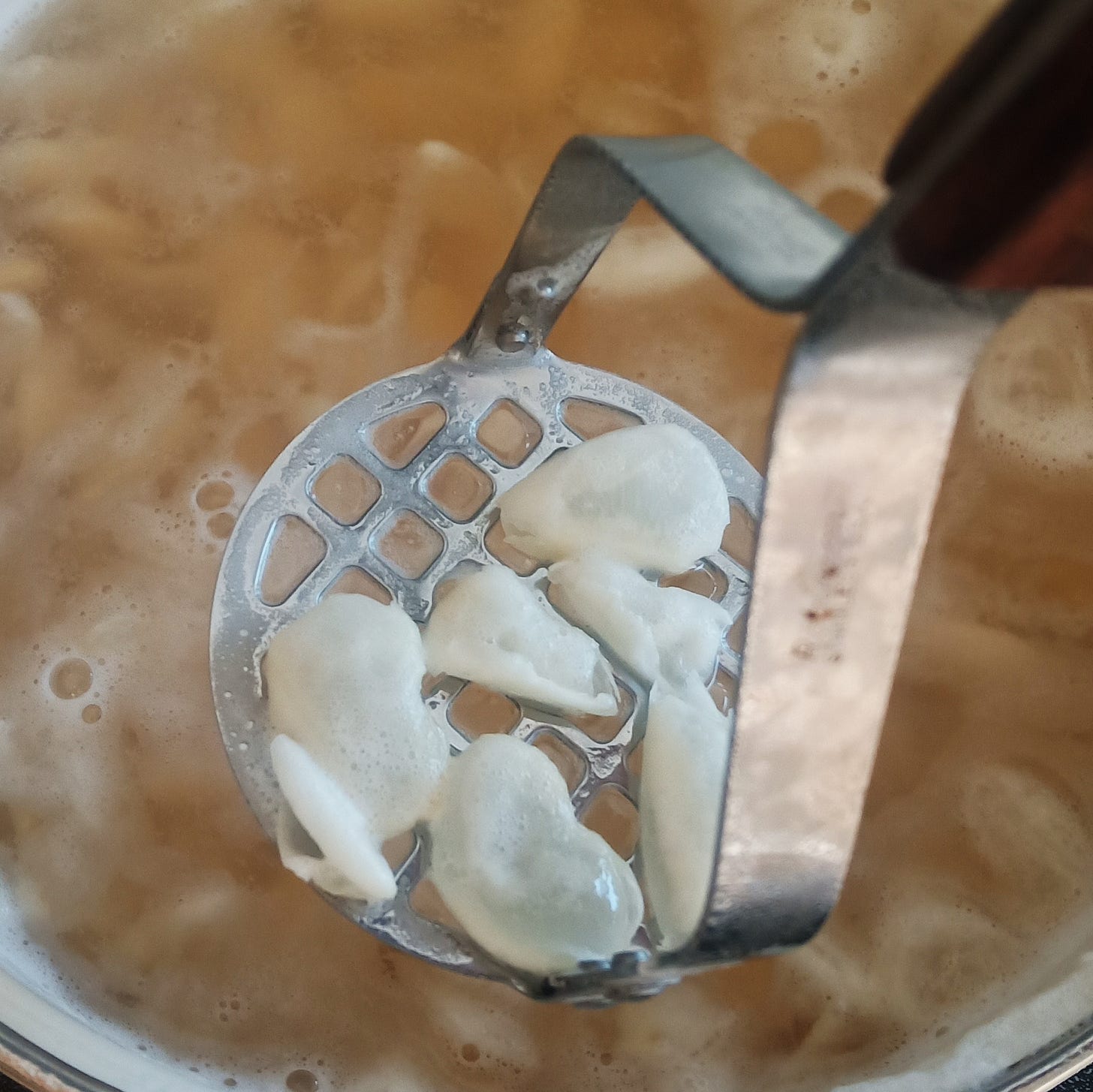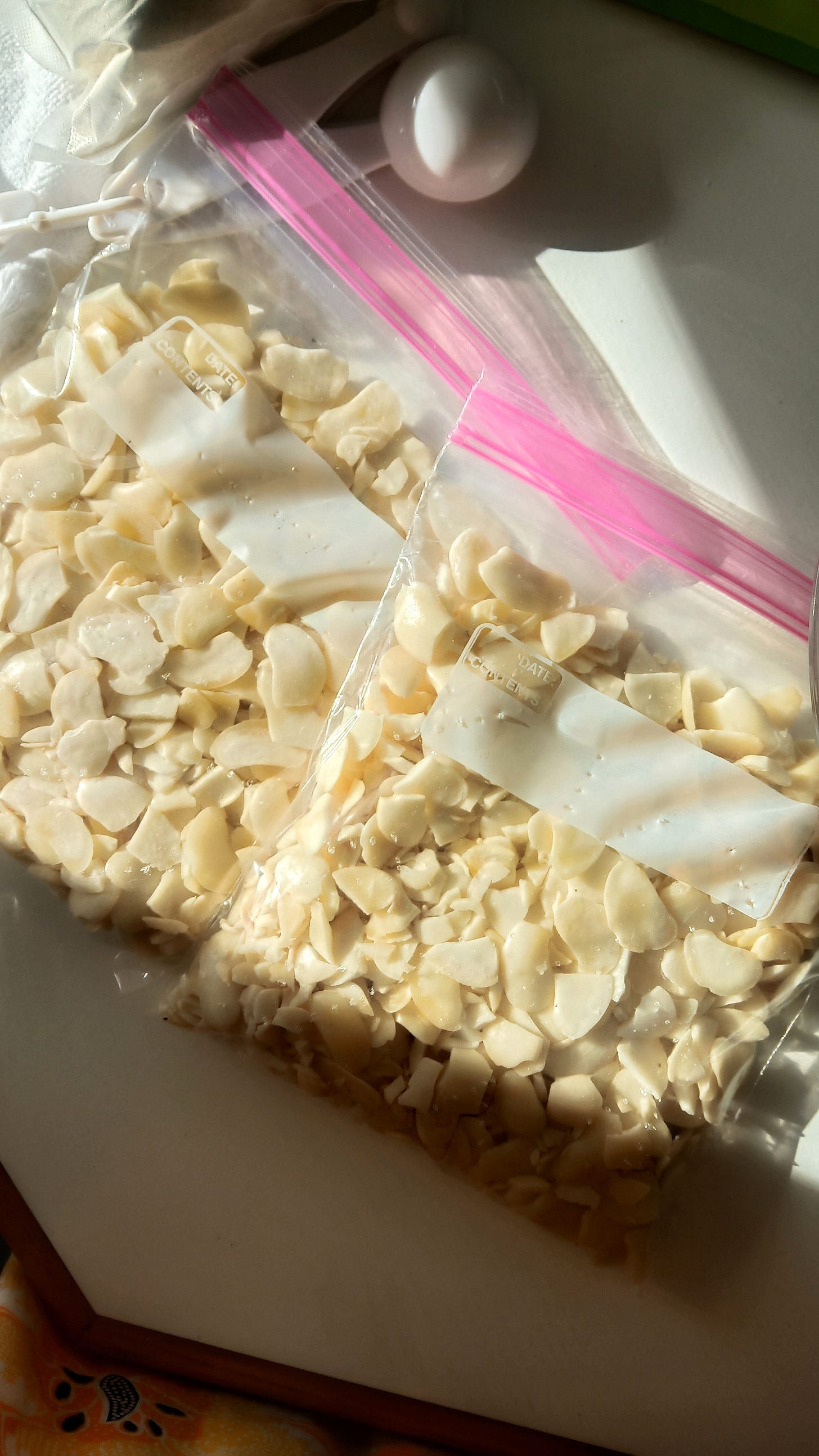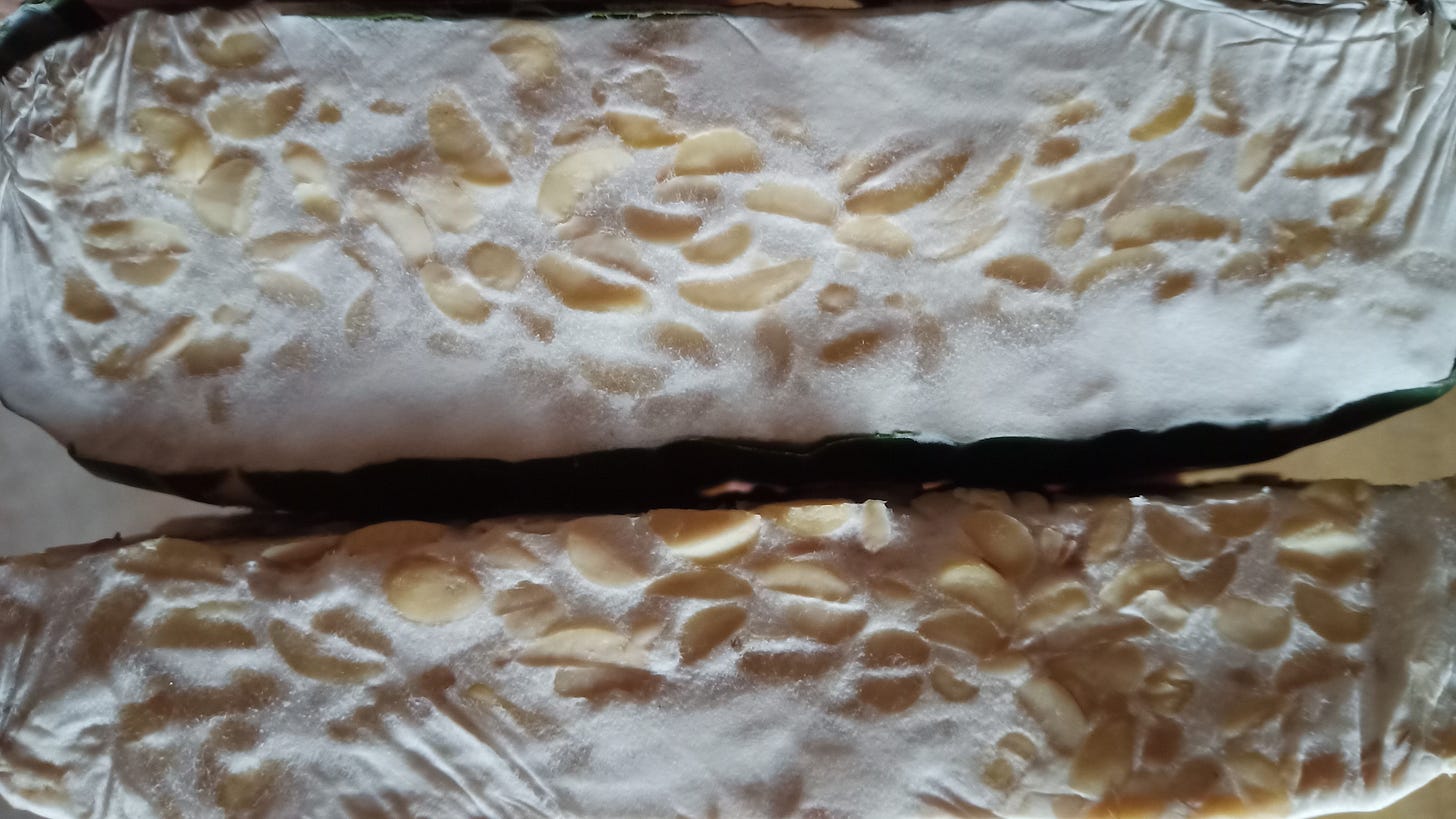HOW TO MAKE TEMPE - it's a vegan superfood, so you better make it. LOL.
A (kind of) hands-down recipe and a bit of history on Tempe! Available in English and Indonesian (Bahasa Indonesia).
“Do re mi sol,
Jenang dodol geal geol
Mi re, mi re,
Tahu tempe enak rasane…”
Cheap, related to the image of poor people, and “being stepped on”. That’s what some Indonesians think about tempe (unfortunately until today). Many were surprised that Tempe is nutritious and labeled as superfood (lol any food that comes from the southern hemisphere of the world is superfood) as it contains B12 and protein that’s higher than beef. But I’m not here to make argument about how nutritious it is or what it actually is, as it’s been explained by many writers including Tempe Movement and Lara Lee .
There is nothing priyayi about tempe. The term “bangsa tempe” or “tempe nation” is a term created by those so-called priyayi as a derogatory word for most people who are poor. Indeed, tempe is people’s food or volk’s voedsel as mentioned on Encyclopaedia van Nederlandsch Indie (1922) and Oslan Husein’s song Tahu Tempe. To me, Tempe is like the Stoccafisso (Air-dried codfish) of Italy’s Cucina Povera.
There’s not much to find on how Tempe was initially made or discovered. However, the word Tempe can be found in Serat Centhini, Sufist literature of Java from the 17th century telling a pilgrimage story set in 1600-ish in Java island. Serat Centhini consists of over 200.000 lines, written in 12 books. (As a comparison, Odyssey has 12.109 lines already)
a page from Serat Centhini
“Brambang jae santen tempe, asem sambel lethokan”
In the third book of Serat Centhini, one of the characters, Cebolang, was doing a pilgrimage across Java and he stopped at Tembayat village (now in modern-day Klaten). He was welcomed by Pangeran Tembayat with such tasty meals; Tender diced tempe in savory coconut soup seasoned with sweet slivered shallots and roasted crushed ginger enjoyed with Sambal Lethokan - sambal made of aged Tempe (Tempe Semangit) or in another term from Kediri, Sambal Tumpang.
Many assumptions are made when it comes to the history of Tempe. From how it was probably discovered when or right after Tofu was made in Java to how Java was getting even more packed with people. Ong Hok Ham said that Tempe was an innovation created when more and more people came to Java creating less forest to hunt for food and less space to make a small ranch for chickens, cows, and pigs, in the yard. One of the groups of people who came to Java at that time (15 to 17th century) was the Dutch. Dutch colonial government took lands and forced people to work on the land as cooli - making them not having enough time to plant or hunt foods.
You know, that makes sense. Traditionally, making Tempe is straight-forward! Washed, soaked, and boiled soybeans are wrapped in Daun Jati (Teak leaf; the trees are spread all around south India, Laos, Myanmar, Thailand) or Daun Waru (Sea Hibiscus). Not all Daun Jati and Daun Waru can be the wrapper, but the ones with threads of white mold (Rhizopus Oligosporus). Then, you wait for two or three days, while working on the land or fighting in guerilla war (General Soedirman who led the Guerilla War from 1948 - 1949 throughout East and Central Java carried Tempe as an essential food, but there’s no proof yet if he made it in the forest or not).
So, how do you make tempe? Does it have to be soybeans?
Nope. Any beans are good! From mung beans, lamtoro beans, black eyed peas, godril (trembesi beans), fava beans, and even goji berry! In this recipe, I used Lima Beans, that’s easy to find in Florida - where I’m right now. Lima Beans are often confused as Kacang Koro or Fava Beans!
MAKING TEMPE
What you need
500 - 625 grams of beans of choice, preferably dehulled (I used Lima Beans here) and even better, split! Whole beans are also fine, it just makes your Tempe chonky.
if not dehulled, you can follow my steps in the recipe!
¼ teaspoon of Rhizopus Oligosporus* (at max, for 500 - 625grams of beans, you can put ½ tsp)
Water to wash, soak, and boil.
The temperature in the room:
29 to 32 Celsius ( 84 to 90 Fahrenheit)
HOW YOU MAKE TEMPE
DAY 1
Wash the beans thoroughly, and strain ‘em
Put the beans into a big pot and pour water until the water covers 6 to 10 cm above the surface of the beans.
Soak for one night (8 to 12 hours). If you soak them for over 8 hours, be sure to change the water every 6 hours.
my Lima Beans after being soaked for 12 hours, the beans started to split!
kacang Lima yang sudah saya rendam selama 12 jam, nah tuh mulai membelah diri!
DAY 2
After soaked for one night, it’s easier to dehull the beans (if you have hulled beans). Simple dehull them with your hands.
Strain the water and again, pour water until the water covers 6 to 10 cm above the surface of the beans.
With the lid on, boil on medium heat until it starts to boil (showing many bubbles!). While boiling, some hulls or the skin of the beans will come out, so be sure to take them off using a spoon or similar tool.
Turn the heat off and put the lid off
Wait for the beans to cool down, then put the lid on, and soak again with the water for 8 to 12 hours. (No need to change the water every 6 hours here!)
DAY 3
Strain it and again, pour water until the water covers 6 to 10 cm above the surface of the beans.
With the lid on, boil the beans until they’re half-cooked (depending on which beans you use. the boiling time ranges from 7 to 20 minutes). For Lima Beans, it took 15 minutes.
Take 1 bean and try to bite it. Half-cooked beans have a slightly hard texture.
Drain the water
Wait to cool down. Then, split the beans - unless you want Chonky Tempe, which is fine too! I just find it easier and faster to harvest when the beans are split.
Then, roast the beans on a big flat pan on medium heat until the water evaporates. Mix it frequently with a spatula, so you’re not going to burn the beans. (This takes from 5 to 7 minutes)
Pour the slightly roasted beans into a pan covered with thick tissue or kitchen towel to make sure that they’re really dry. Otherwise, the yeast won’t grow!
Let the beans cool (15 to 30 minutes)
When they’re cool, put them into a big bowl, and the yeast into the beans. Mix well!
At this point, you can wrap it in wide leaves, like banana leaf (or maybe monstera leaf); parchment paper; or zip-lock plastics.
If you wrap it in zip-lock plastics, make sure you poke some holes on it using a fork to let the air get into it. So the yeast can breathe!
Store in a clean cabinet.
Wait for two or three days! The time really depends on the temperature. My first Tempe, Black beans Tempe, was harvested after 3,5 days at 25 Celcius. Good luck!
Lima Beans Tempe after 3 days. Woohooo! I love the texture of Lima Beans Tempe because it’s buttery and so tender!
LEFT: Matured Yeast on Tempe. RIGHT: Undeveloped Yeast on Tempe.
KIRI: Ragi yang matang pada Tempe. KANAN: Ragi yang tidak tumbuh di Tempe.
Versi Bahasa Indonesia
Sudah murahan, kere, diinjak-injak pula. Begitu sekiranya persepsi sebagian orang akan tempe. Tidak banyak yang menyangka kalau ternyata Tempe bisa dikenal sebagai makanan kaya kandungan B12 dan protein yang lebih tinggi dari daging sapi. Tapi, saya tidak akan berargumen lebih jauh tentang nutrisi tempe, karena toh sudah banyak yang menyuarakannya. Salah duanya adalah Tempe Movement Indonesia dan Lara Lee.
Tidak ada yang priyayi dalam tempe. Istilah “bangsa tempe” sendiri dikemukakan oleh kaum priyayi untuk mengolok rakyat. Tempe adalah makanan rakyat atau volk′s voedsel seperti dirujuk dalam Encyclopaedia van Nederlandsch Indie (1922) dan Oslan Husein dalam lagunya “Tahu Tempe”. Menurut saya, Tempe itu sekelas ikan cod kering (stoccafisso) dalam Cucina Povera-nya Itali (diterjemahkan kurang lebih sebagai Kuliner Kere).
Mula dibuatnya Tempe belum diketahui pasti, tapi kata Tempe dapat ditemui dalam Serat Centhini, sebuah literatur Jawa dari abad ke-17, yang berlatar belakang pulau Jawa tahun 1600-an.
“Brambang jae santen tempe, asem sambel lethokan”
Pada Serat Centhini jilid 3, diceritakan Cebolang, salah satu tokoh dalam Serat Centhini, melakukan pengembaraan dan beristirahat di desa Tembayat (wilayah Klaten sekarang). Di situ, ia dijamu oleh Pangeran Bayat dengan hidangan yang rasanya sungguh sedap; tempe dalam kuah santan yang dibumbui legitnya irisan bawang merah dan jahe geprek, dinikmati bersama Sambel Lethokan, sambal yang terbuat dari tempe semangit atau istilah lainnya di Kediri, Sambal Tumpang.
Banyak asumsi tentang awal mula Tempe; dari hadirnya Tempe yang bersamaan atau setelah produksi Tahu, yang bahannya sama-sama kedelai, datang ke Jawa. Ada pula dugaan dari Ong Hok Ham yang mengatakan bahwa Tempe hadir sebagai inovasi saat Jawa semakin dipenuhi penduduk, berakibat pada menyempitnya lahan pekarangan untuk angon ayam, babi, maupun sapi. Selain itu, meluasnya perkebunan kolonial berakibat pada menciutnya lahan hutan, sehingga tidak ada lagi ruang untuk berburu. Juga, rakyat Jawa yang dimanfaatkan sebagai kuli di perkebunan kolonial, tidak lagi memiliki waktu untuk berburu maupun bercocok tanam.
Bisa jadi begitu, toh pembuatan tempe secara tradisional sangat mudah. Kedelai yang sudah dicuci dan direbus tinggal dibungkus daun jati atau daun waru dengan kapang putih bernama Rhizopus Oligosporus. Tunggu dua atau tiga hari sembari nguli atau melakukan gerilya (Jenderal Sudirman membawa bekal tempe saat perang gerilya di Jawa tetapi tidak disebutkan apakah ia membuat tempe atau tidak) - sudah tinggal diolah dan dilahap.
Jadi, bagaimana membuat Tempe? Apakah harus menggunakan kedelai?
Tidak. Kacang atau biji apa saja bisa digunakan untuk membuat tempe. Dari kacang hijau, lamtoro, kacang tolo, godril (biji trembesi), kacang koro (fava beans), sampai angkak (goji berry)! Di resep ini saya menggunakan Lima Beans, yang mudah didapat di lokasi saya di Florida - juga sering dikira sebagai Kacang Koro.
MEMBUAT TEMPE
Bahan
500 - 625 gram kacang pilihan anda (saya pakai Lima Beans) - lebih baik yang kulitnya sudah dikupas dan sudah terbelah. Kalau tidak juga tak apa-apa, hanya meringankan kerjaan saja. Tempe dengan biji utuh cenderung menjadi kekar dan juga butuh waktu lebih lama untuk matang.
¼ sdt Ragi Tempe (Rhizopus Oligosporus) (*paling banyak ½ sdt untuk 500-625gr)
Air untuk mencuci dan merebus
Suhu udara atau temperatur di ruangan:
29 - 32 celsius (84f - 90f)
Cara:
HARI PERTAMA
Cuci bersih kacang
Pindahkan ke panci dan beri air hingga menutupi 6-10cm permukaan kacang
Rendam semalam (8-12 jam). Jika merendam di atas 8 jam, ganti air setiap 6 jam.
HARI KEDUA
Setelah direndam semalam, kupas kulit dalam posisi kacang masih dalam panci berisi air. Mengupas kulit kacang mentah lebih mudah dilakukan dalam air.
Tiriskan air dan beri air lagi hingga menutupi 6 - 10cm permukaan kacang
Rebus sampai mulai mendidih (mungkin butuh 5 - 10 menit). Sambil merebus bisa diangkat dan dibuang kulit ari yang menggenang di permukaan.
Matikan api
Tunggu sampai dingin, lalu tutup panci dan rendam dengan air rebusan tersebut selama 8 - 12 jam. (di tahap ini, airnya nggak perlu diganti tiap 6 jam, ya)
HARI KETIGA
Tiriskan air dan beri air lagi hingga menutupi 6 - 10cm permukaan kacang
Rebus sampai setengah matang (sekitar 7 - 20 menit, bergantung kacang yang dipakai). Untuk Lima Beans, butuh waktu 15 menit).
Ambil 1 kacang dan coba gigit, kacang setengah matang masih memiliki tekstur yg sedikit keras
Tiriskan kacang
Tunggu sampai benar-benar kering, lalu belah kacang menjadi dua dengan jemari tangan. Tapi kalau mau utuh, ya monggo
Sangrai kacang dalam api kecil sampai seluruh air menguap. Aduk berkali-kali agar tidak gosong. Biasanya hanya butuh 5 - 7 menit.
Tuang kacang ke wadah, beri tissue untuk memastikan kacang sudah kering. Karena kalau masih basah, ragi akan membusuk dan mati.
Jika sudah yakin kering, tuang ke wadah kering, dan beri ½ sdt ragi. Aduk rata.
Masukkan ke daun yang lebar (daun pisang, monstera juga bisa) atau kertas minyak, atau bisa ke dalam plastik klip
Jika menggunakan plastik klip, jangan lupa melubangi plastik dengan cara menusukkan garpu. Hal ini dilakukan supaya ada udara yang masuk dan membantu proses fermentasi.
Simpan di laci yang bersih!
Tunggu 2 - 3 hari! Bergantung suhu, saya pernah coba dalam suhu 25 celcius atau 76f, dan tempe pun berhasil matang dalam 3,5 hari. Kalau terlalu dingin, ragi tidak bisa tumbuh. Kalau terlalu panas pun ragi membusuk.
Selamat mencoba!
Sources:
Tempe, Dari Jawa untuk Dunia. Ditulis oleh Ong Hok Ham. https://www.kompasiana.com/osakurniawanilham/54ff43eba33311bc4c50f877/serial-otak-indonesia-6-tempe-dari-jawa-untuk-dunia
Selera Ong Hok Ham. Ditulis oleh Asvi Warman Adam.
http://lipi.go.id/berita/selera-onghokham/1557
Bunga Rampai Tempe Indonesia. Ditulis oleh Sapuan dan Noer Soetrisno.















